Anatomy of an escape
Local artists create architectural model of El Chapo’s underground exit from Mexican prison
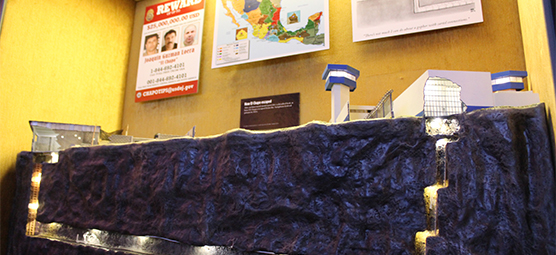
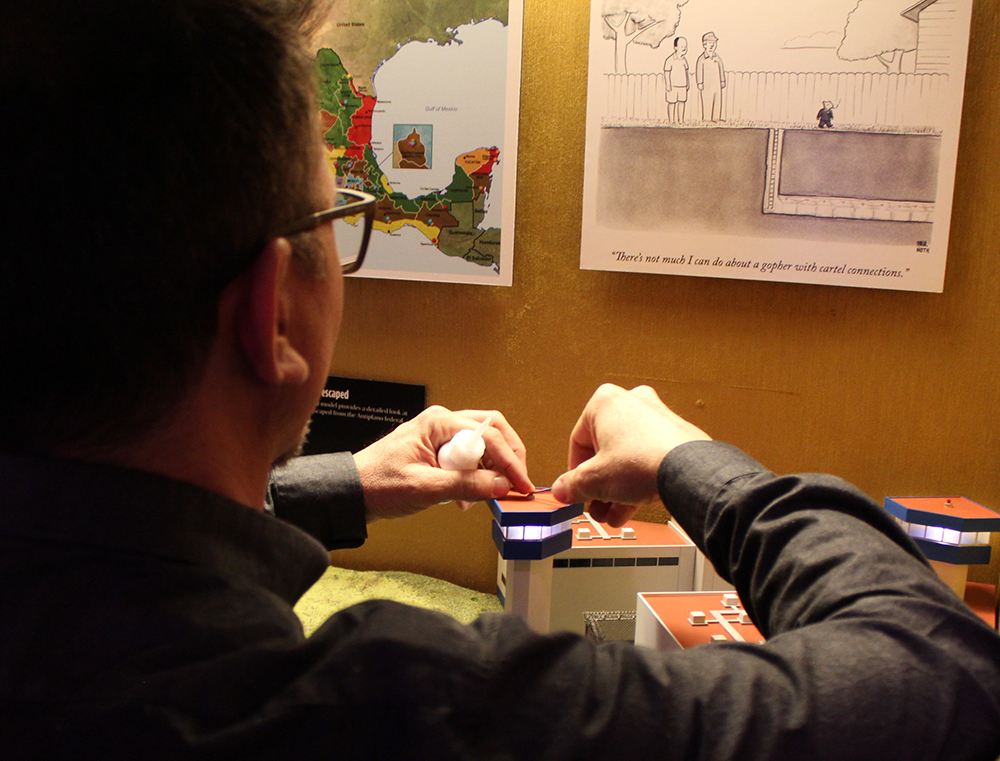
Adam Throgmorton has spent the past two decades crafting three-dimensional scale models of Las Vegas resorts, from the hotel towers down to the trees, swimming pools and fountains. Using X-Acto knives, rulers, foam board, glue and computer-aided design software, he’s fashioned hyper-realistic architectural models of the Bellagio, MGM Grand, Mandalay Bay, Treasure Island, Mirage, Monte Carlo, New York-New York, Excalibur, Luxor, Paris and Red Rock Station, among others.
Throgmorton and fellow master model builder Shawn Bicker recently were offered a unique challenge by The Mob Museum – putting their skills to work fashioning a diorama re-creating last year’s underground prison escape by Mexico drug cartel boss Joaquin “El Chapo” Guzman.
Throgmorton’s works are known as presentation models of commercial buildings, typically displayed in places such as sales centers. Usually he will have the computer-aided design (CAD) plans, or digital blueprints, of buildings to work from. But in the case of building a model of El Chapo’s subterranean exodus, without CAD plans to go by, “we had to work backwards,” said Throgmorton, who is owner of Henderson-based ModelWorksAJT.
“This does stand out as far as communicating an event that took place historically,” he said.
“This is really storytelling through models.”
“We want people to recognize it,” Bicker said. “Our hope is for it to be familiar to them.”
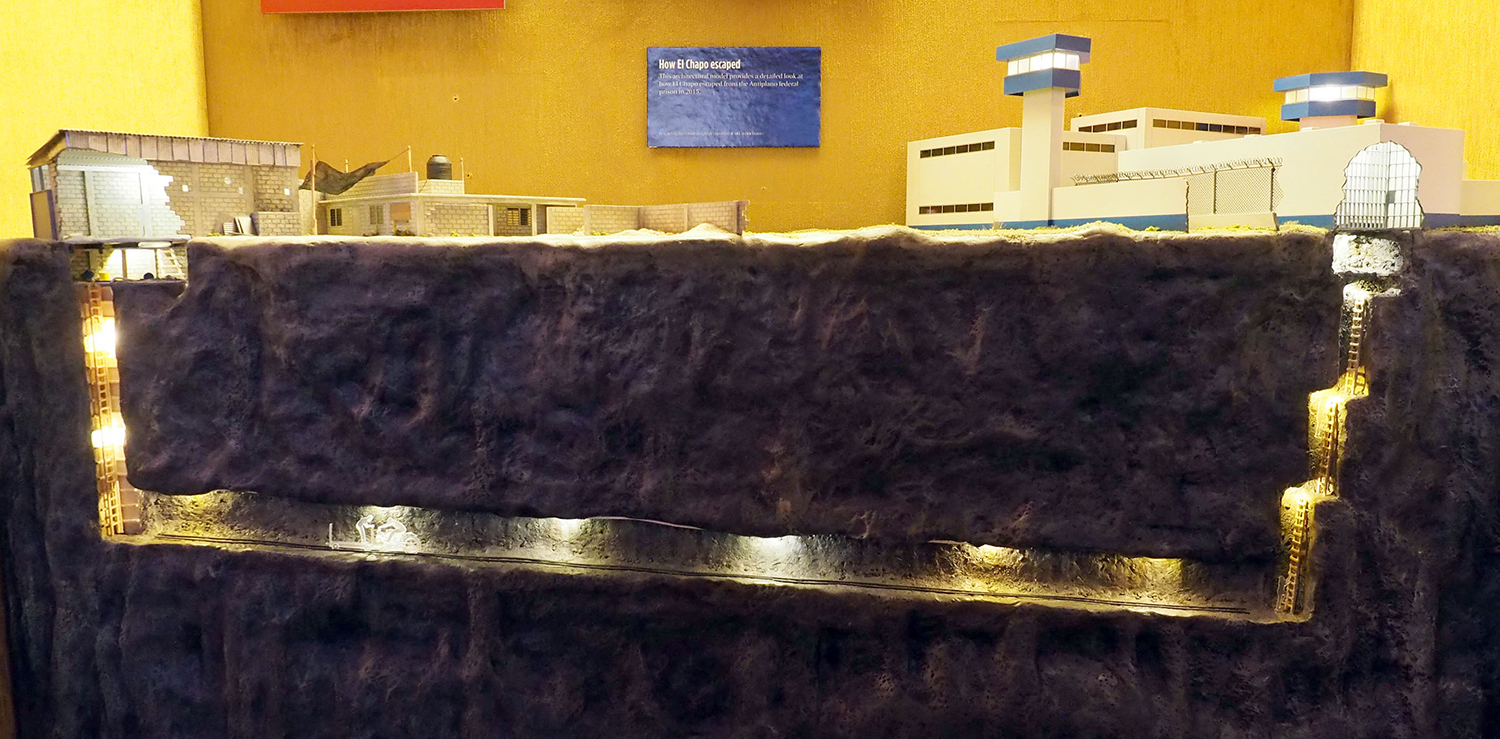
Guzman’s prison break became worldwide news last summer. Shortly before 9 p.m. on July 11, he pulled up a piece of cement flooring in the shower of his cell at the Altiplano maximum-security prison in Mexico and descended into a shaft. He stepped down a ladder to a tunnel his henchmen built that led to a home construction site about a mile away. His men then drove him in a truck to an airfield where a pilot flew him away to freedom (short-lived, it turned out – he was captured again in January).
Mexican authorities, befuddled and embarrassed, only discovered later that Guzman had sent his men to study engineering in Germany for months in order to prepare. His conspirators obtained the blueprints of Altiplano prison, bought property and started to build a house nearby. Using a compass, they dug a tunnel, more than 30 feet underground and almost a mile long, leading to the exact spot beneath Guzman’s cell.
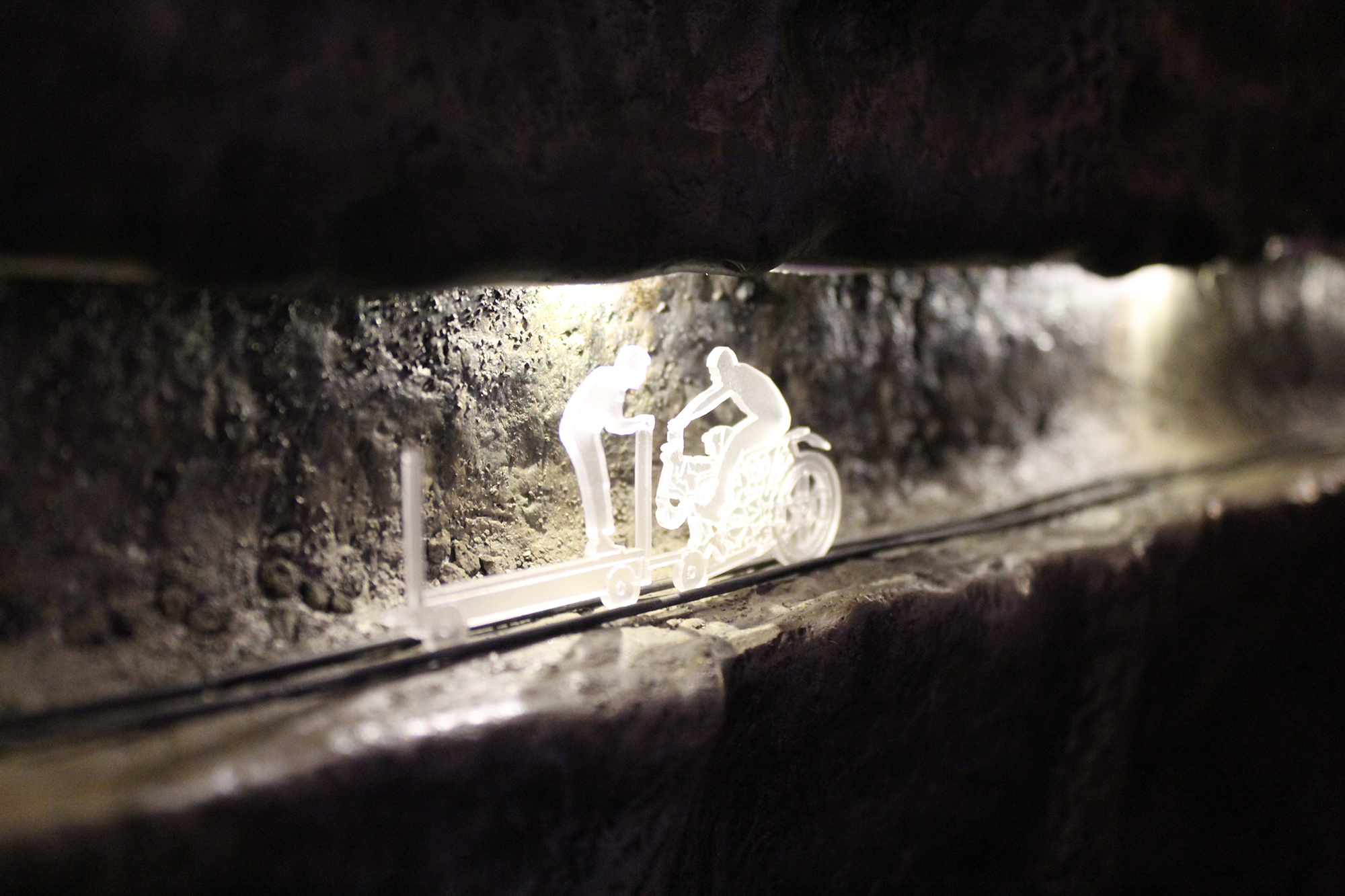
After Guzman descended a ladder in the shaft under his cell to the tunnel, a cohort drove him on a modified motorcycle, set on a fixed track, to the other side, where he walked up a pair of ladders and through a hole in the floor of the house.
Throgmorton and Bicker studied as much as they could read and watch about the escape – including a detailed video and computerized reenactment of it created by the Mexican government – during the six weeks it took to complete the diorama.
Bicker said the model is essentially about showing “when he got into the tunnel and how he got out.”
The prison itself was too large so they included just a portion of it with its key elements, a guard tower and Altiplano’s distinctive white walls with blue trim. The wall covering Guzman’s corner cell is exposed so the viewer can see details inside simulating the setting where the escape began: prison bars, bed, toilet, shower and the prison’s surveillance camera, based on the one that filmed Guzman leaving the cell unbeknownst (or otherwise) to his prison captors.
“We wanted to show that camera in connection with the shower” where Guzman slipped away, Bicker said.
The tiered vertical shaft Guzman’s men dug for him is shown amid imitation earth and rocks down to the main tunnel leading to another shaft with a ladder leading up to the basement of the house and a second smaller ladder to the hole in the floor based on the one Guzman emerged from.
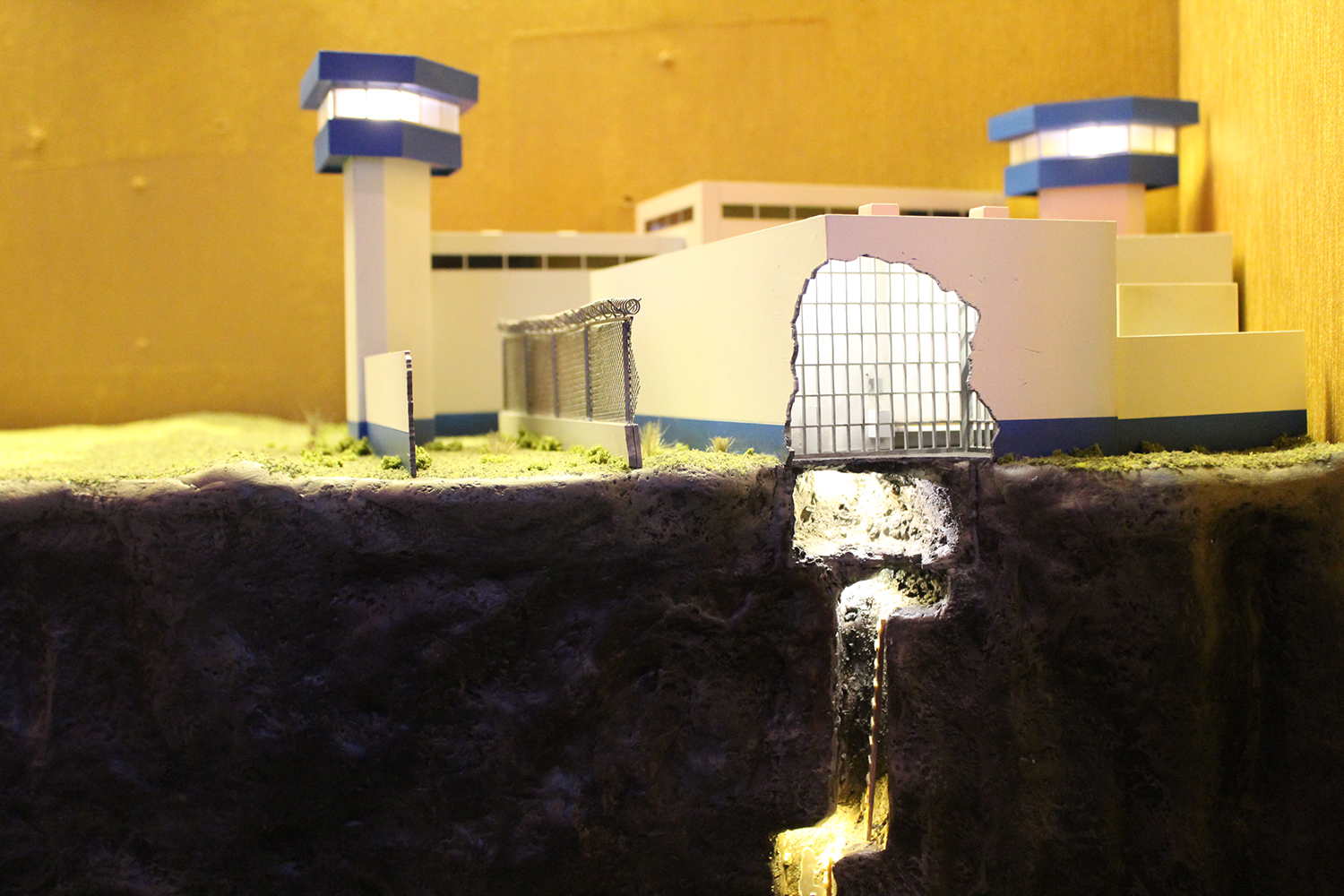
In the shafts and the tunnel, viewers will see several “ghost” or silhouette images of Guzman – illuminated by LED lights – showing the progression of his journey from his cell down the first ladder to the tunnel and the “outline” of the motorcycle-like vehicle driven by his cohort.
“We didn’t want to put in a doll,” Bicker said. “We thought that was too cheesy.”
For the view of the diorama overall, the idea was to make a dirt-colored “cutout” of the earth to show the extent, in miniature, of where the shafts and tunnels were underground “like the earth broke away, like you’ve actually cut the earth in half” and create a feeling that is “moody and dark … kind of eerie,” Throgmorton said.
Outside the fake house on the ground level, Throgmorton and Bicker also depicted a walled area where Guzman’s tunnel diggers cunningly spread out the excess dirt to hide the evidence.
Along the way, Throgmorton and Bicker used laser cutters, acrylics and plastics to produce the faux earth, buildings, ladders, shafts and tunnel.
“Through trial and error we’ve done a few different designs, but we settled on this one to make sure it is clear and communicated,” Throgmorton said. “It’s like a three-dimensional painting.”
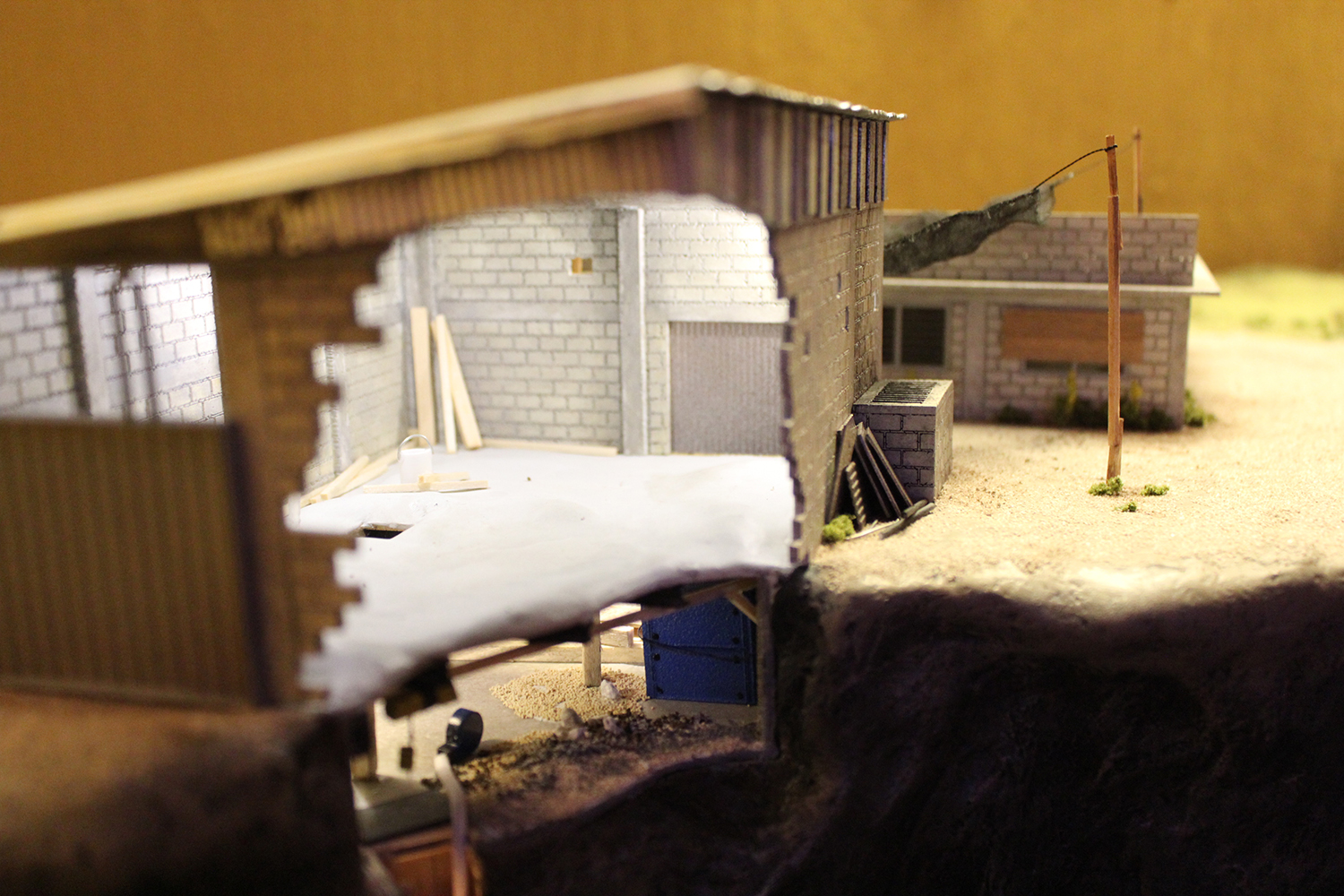
The planning and execution of Guzman’s escape – which reportedly costs the drug lord millions in materials and bribes – remains almost impossible to imagine, Throgmorton said
“I’m really in awe of it,” he said. “They used a compass! It’s amazing. It shows the level of determination.”
“It’s important for people to walk around the display and say they had no idea the amount of planning it took,” he added.
“That’s what we wanted to relate, just how amazing an effort it was.”
The prison escape model is part of a new temporary display and video at The Mob Museum focused on El Chapo and the Mexican drug cartels.
Feedback or questions? Email blog@themobmuseum.org





